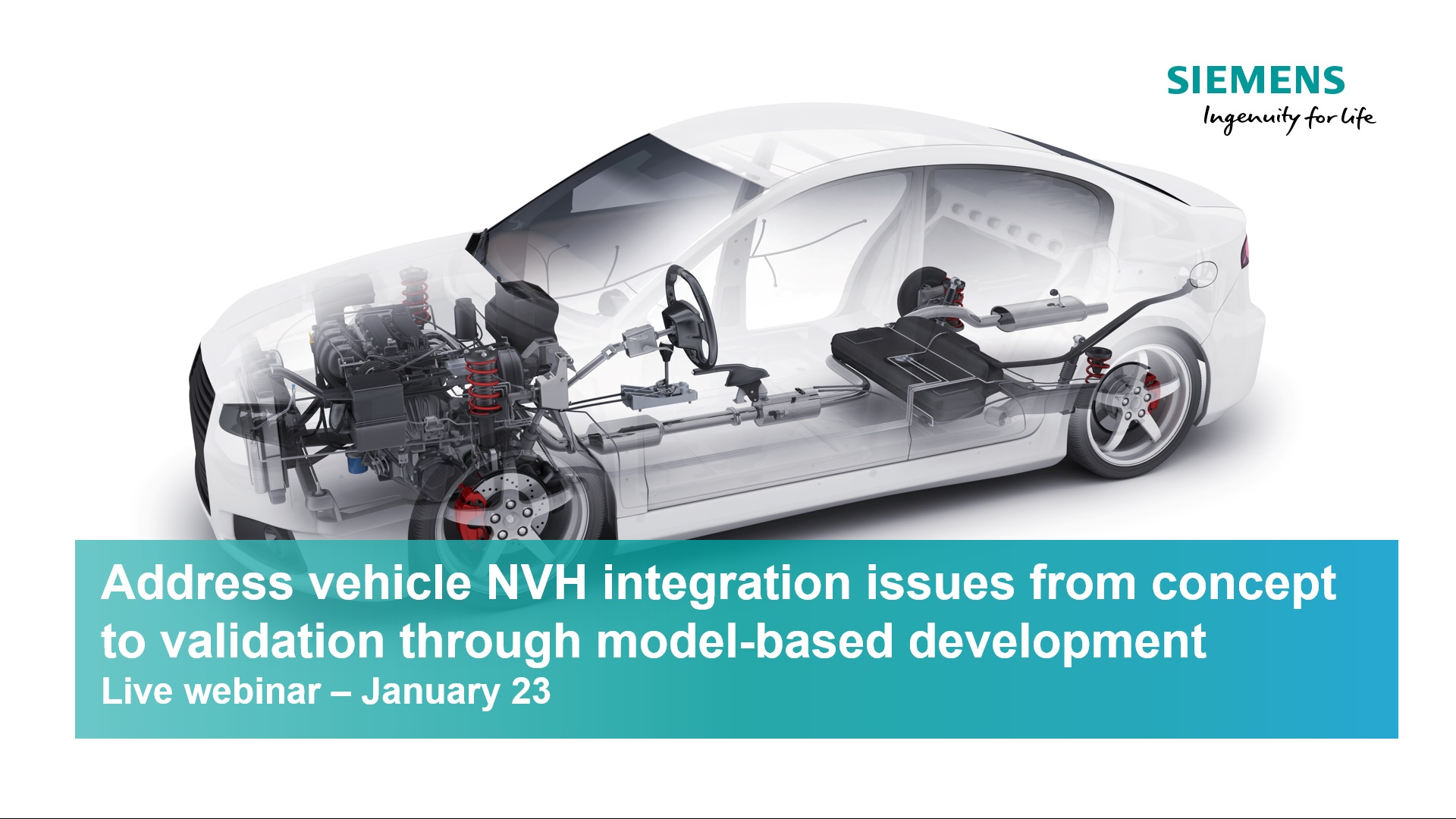Address vehicle NVH integration issues early on

Can model-based development push the boundaries of evaluating NVH performance?
Boosting fuel economy ranks high on the agenda, but design modifications that reduce fuel consumption inevitably impact other performance attributes. In an effort to keep every energy efficiency modification in check, manufacturers ran isolated campaigns targeted at separate attributes. Besides cumbersome, this approach also generated redundant and sometimes conflicting models and data sets.
Energy efficiency, yes! But, not at the expense of NVH or driving comfort!
Simcenter helps to avoid late troubleshooting of NVH integration issues and shift the workload emphasis from test and troubleshooting to system simulation. That’s where our model-based development (MBD) solution comes into place. We address vehicle NVH integration issues already in the concept stage of the development. Doing so, we address a variety of noise and vibration issues at the design stage. NVH issues such as judder, booming, rattle, tip-in/tip-out, engine start-stop or electric motor torque ripple at the design stage!

From driver input to evaluation target, from concept design up to full vehicle verification, this approach pushes the boundaries of vehicle NVH performance.
Vehicle NVH integration, what’s in it for you
- Address vehicle NVH integration issues early in the development
- Evaluate different architectures and variants at reduced time and cost
- Balance NVH with drivability and energy management at early stage
- Obtain quantifiable results such as gaining up to 50% time reduction when troubleshooting new NVH issues or no more judder in the design of your new transmission
What we are offering:
- All of the above!
Interested to hear more? Join the webinar: “Address vehicle NVH integration issues from concept to validation through model-based development” and discover how to push the boundaries of evaluating vehicle NVH integration.
During this webinar, we will explain how to incorporate NVH performances by means of a model-based development approach, demonstrated with real application examples. Additionally, we will describe how to balance NVH with energy management and drivability.
Want to learn more? Check out this article: Get on top of your game with the newest TPA methods. Component-based TPA, using blocked forces, is a prime example of how new TPA methodologies put the relationship between OEMs and suppliers in a completely new perspective.


